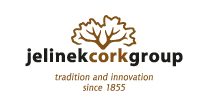One of the most frequent questions that we are asked is, what really is cork? We love getting this question and being able to discuss the unique properties of cork and the cork oak tree.
So, where does cork come from? At the most basic level, cork is the bark of the Cork Oak Tree. Cork comes from the outer two layers of the bark of the cork oak tree, which are carefully harvested. The outermost layer of bark is a darker and rougher material, while the middle layer is the spongy, flexible, light tan cork you see in wine bottles and corkboards.
Planks of Cork Bark being Harvested From a Cork Tree in Portugal
Read more about where cork comes from!
The Cork Oak Tree or Quercus Suber is a subspecies of oak, specifically, live oak. Several properties of the cork oak tree make it remarkable compared to other types of oak trees. One of these properties is the multi-layered bark that allows the outer two layers of bark to be safely harvested without harming the tree.
Portugese Cork Trees Marked with the Number 4 to show they were harvested in 2014.
Learn more about the cork oak tree.
Cork is one of the world's most sustainable materials. After the outer two layers are harvested, the bark begins to regrow, increasing the amount of CO2 sequestered by the cork tree. After approximately 9 years, the bark is ready to be harvested again, and the cycle continues for the tree's 200+ year lifespan. Annually, the world's cork forests sequester 14 million tons of carbon dioxide as one of the world's most efficient carbon scrubbers.
Cattle Standing Under a Cork Tree in Portugal
Find out what makes cork sustainable!
So, why can cork bark be harvested without harming the tree when most trees cannot survive their bark being removed? The answer is relatively simple. Cork oak trees have multi-layered bark with defined edges, allowing the two outer layers of the bark to be harvested while leaving the inner layer of bark intact. This inner layer protects the tree and allows the outer two layers to regrow. Cork bark also has an unusual honeycomb shape compared to other wood bark, giving it greater flexibility and versatility.
A Well Rooted and Developed Cork Oak Tree in Califonria
Learn about what makes cork different.
Cork has many traditional uses, such as flooring, wine and beer corks, and cork boards, but did you know that cork can also be used in a wide range of new industries? Cork is a key insulative material for satellite heat shields and is an excellent option for soundproofing walls between multi-family housing units. There are so many innovative ways to use cork and we are continuall looking and finding more. We are excited to see what the future brings to the industry!
An Air Plant Growing in A Cork Bark Planter with Cork Balls as Filler





